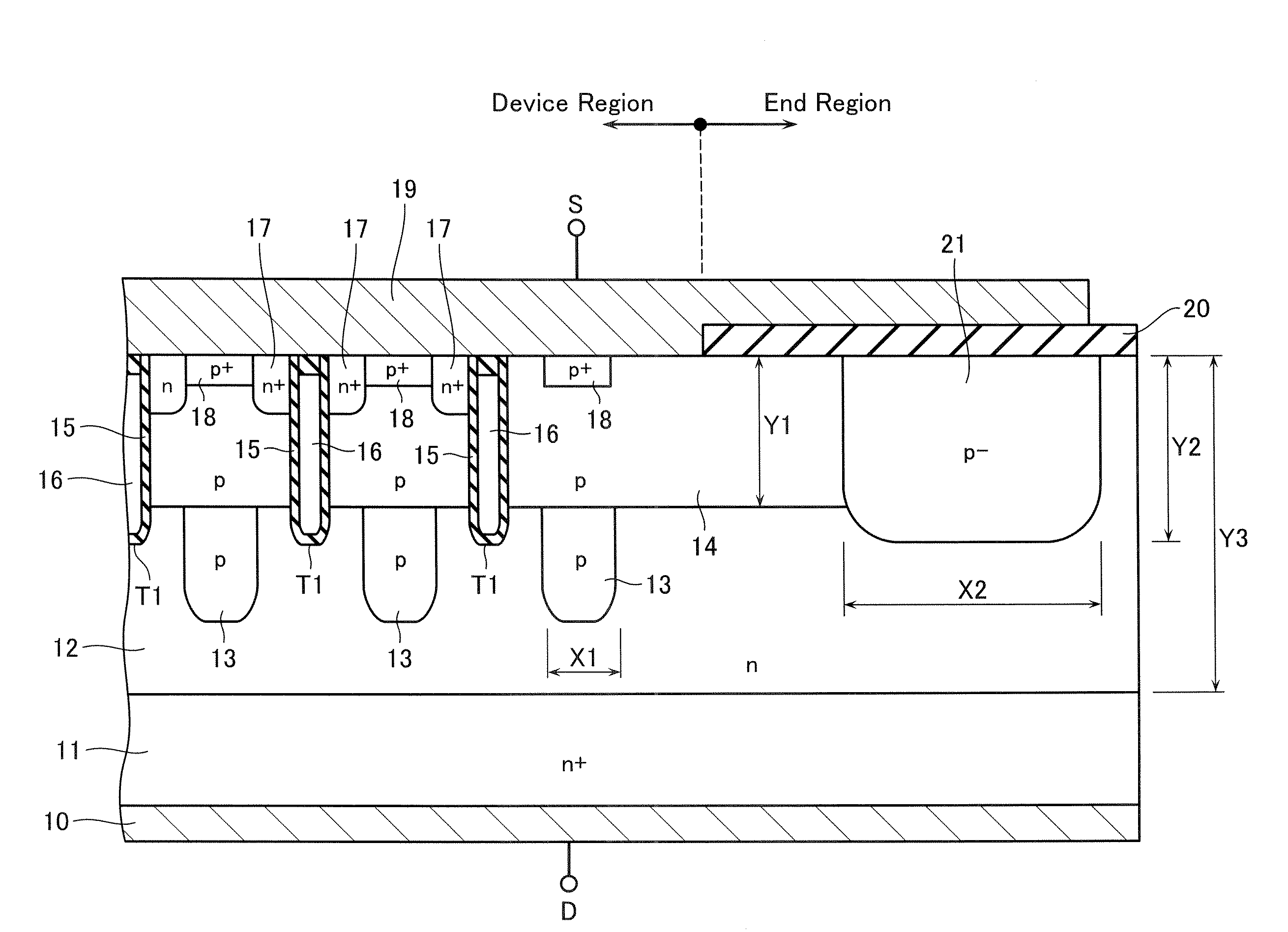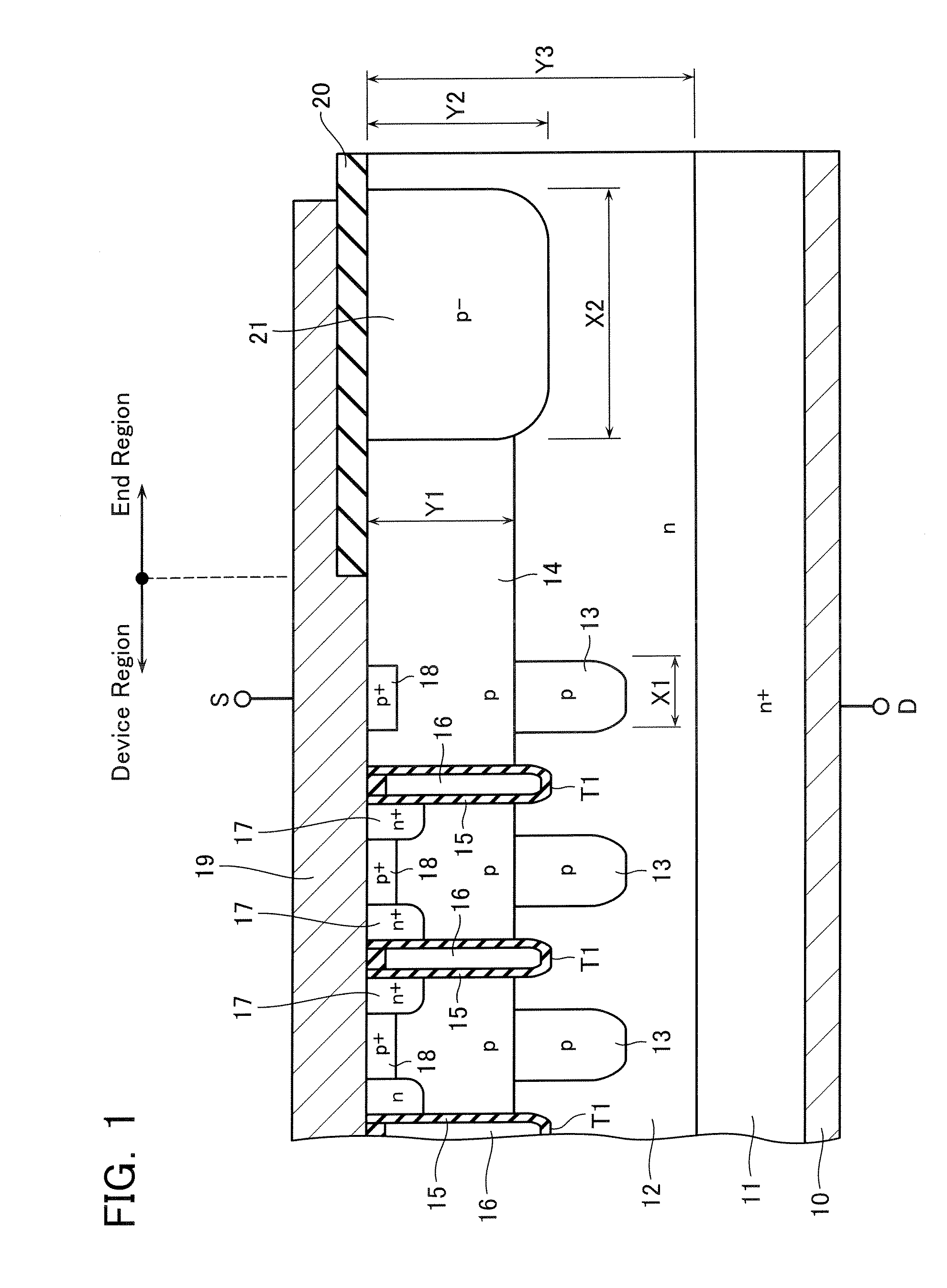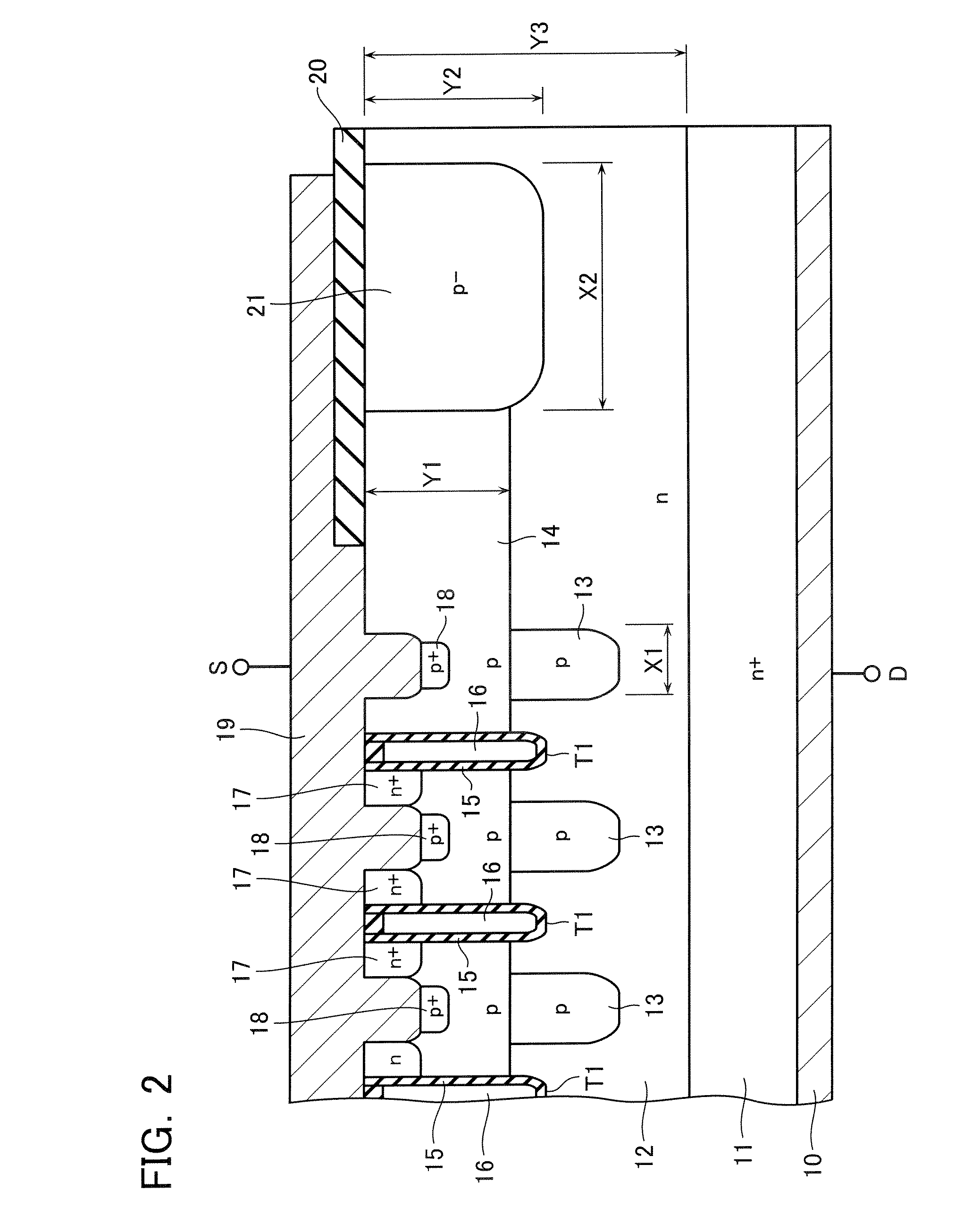Semiconductor device
a technology of semiconductors and junctions, applied in the direction of semiconductor devices, basic electric elements, electrical equipment, etc., can solve the problems of insufficient concentration of electric fields in an end region, inability to form such a narrow-pitched super-junction structure not only in an element region, and inability to achieve high breakdown voltage in an end region
- Summary
- Abstract
- Description
- Claims
- Application Information
AI Technical Summary
Problems solved by technology
Method used
Image
Examples
first embodiment
[0019]FIG. 1 illustrates a cross-sectional structure of a semiconductor device according to a first embodiment of the present invention.
[0020]This semiconductor device is composed of an element region in which a semiconductor device, for example, a so-called trench-gate type n-channel MOS transistor is formed, and an end region formed to surround this element region. AMOS transistor in this embodiment is supposed to be a MOS transistor with a breakdown voltage of about 30V for the energy-saving switching device market used on a mobile communication device. Furthermore, although a trench gate type n-channel MOS transistor is explained as an example here, the present invention may not be limited to this. It may include a p-channel MOS transistor. The present invention may be applied to an IGBT, a Schottky-barrier diode, and so forth. Moreover, the present invention is applicable also to the planer type semiconductor device instead of a trench gate type.
[0021]As shown in FIG. 1, an n-c...
second embodiment
[0035]Next, the second embodiment of the present invention will be explained with reference to FIG. 3. In FIG. 3, the same numerals are given to the same components as FIG. 1, and these components have the same structures and functions. Therefore, the detailed explanation thereof is omitted hereinbelow.
[0036]This embodiment comprises an n-type embedded layer 22 under the p-type termination layer 21. This layer has an effective impurity concentration and a career concentration lower than those in the n-type epitaxial layer 12 and a high resistance. This n-type embedded layer 22 may be formed by carrying out ion implantation of boron (B) with high energy, when forming the termination layer 21. As described above, by forming the n-type embedded layer 22 with lower career concentration under the termination layer 21, a depletion layer spreads in the end region easily at the time of the non-conductive state of a MOS transistor, and it is possible to raise the breakdown voltage of the end...
third embodiment
[0037]Next, the third embodiment of the present invention will be explained with reference to FIG. 4. In FIG. 4, the same numerals are given to the same components as FIG. 3, and these components have the same structures and functions. Therefore, the detailed explanation thereof is omitted hereinbelow.
[0038]This embodiment is different from the second embodiment in that the termination layer 21 is not formed in the end region, and only the n-type embedded layer 22 is formed in the bottom of the epitaxial layer 12. The p-type base layer 14 is extended to the end region. Also in this embodiment, if the career concentration of the n-type embedded layer 22 is set low, it is possible to extend a depletion layer close to the silicon substrate 11 at the time of the non-conductive state of a MOS transistor. This may maintain the breakdown voltage of the end region high enough compared to that in the element region.
PUM
 Login to View More
Login to View More Abstract
Description
Claims
Application Information
 Login to View More
Login to View More - R&D
- Intellectual Property
- Life Sciences
- Materials
- Tech Scout
- Unparalleled Data Quality
- Higher Quality Content
- 60% Fewer Hallucinations
Browse by: Latest US Patents, China's latest patents, Technical Efficacy Thesaurus, Application Domain, Technology Topic, Popular Technical Reports.
© 2025 PatSnap. All rights reserved.Legal|Privacy policy|Modern Slavery Act Transparency Statement|Sitemap|About US| Contact US: help@patsnap.com



